
Currently, there are additional cumulative discounts (ranging from 2% to 25%) that are accessible to 58,750 educational institutions. To determine the applicable discount for all staff members of your educational institution, please log in to your personal Infoworks account.


Course for professional development
Current problems in labor legislation and labor protection in the field of education.
We can apply an additional discount for your educational institution (the size of the discount depends on the number of your colleagues who have already completed Infowork courses).
Currently, 58,750 educational institutions are eligible for additional discounts ranging from 2% to 25%. To find out the discount applicable to all employees of your educational institution, please log in to your personal Infoworks account.


Professional development training
Development of writing skills in students during literature classes in the context of implementing the updated Federal State Educational Standard of the Russian Federation
In addition to this offer, we can also provide a discount for your educational institution (the discount amount depends on how many of your colleagues have enrolled in Infowork courses).
Currently, there are additional cumulative discounts available (ranging from 2% to 25%) for 58,750 educational institutions. To find out what discount is available for all employees of your educational institution, please log in to your personal Infoworks account.


Family Values Development among Students through Literature Lessons in line with FSES LLC Implementation
Breakdown of Presentation by Individual Slides:

Slide 1: The Aquarius Constellation
Presented by Serafima Alekseenko,
an 11th-grade student,
under the guidance of Teacher Volkova E.A.
From MOU Peremilovskaya School
In Shuya

Slide 2 Aquarius
Aquarius is among the 12 constellations that make up the Zodiac signs. It is situated in the southern hemisphere.
Translated from Latin, it means “the cupbearer of wine”.
Aquarius is one of the oldest constellations that have been identified in the sky.
The optimal period for observing it is from August to September.


On Slide 5, you can see the unique representation of Aquarius, which is symbolized by a triune symbol. This symbol consists of two winding lines, representing the duality of water – both giving and taking life. The space between these lines represents the air, which is the source of water.
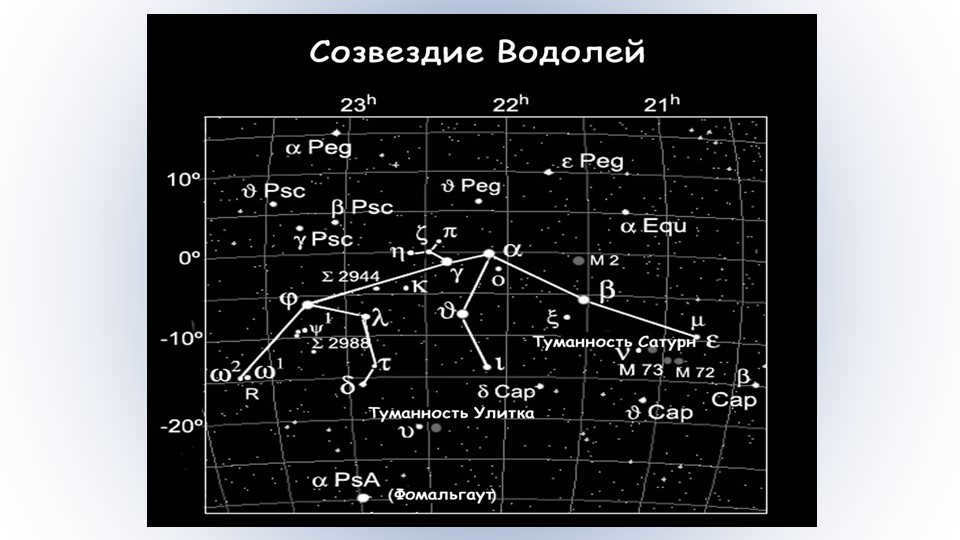

There are 8 stars in the Aquarius constellation, which are arranged in a curved arc. The three brightest stars, Beta Aquarius (Sadalsuud), Alpha Aquarius (Sadalmelik), and Delta Aquarius (Scut), are located in the center of this arc.

Slide 9: The most brilliant stars.
Beta Aquarius is situated at a distance of six hundred light-years from Earth and possesses a luminosity that is 2,200 times greater than that of the Sun. Sadalsuud exhibits other advantages in comparison to the Sun: its diameter is roughly 50 times that of the Sun, and its mass is equivalent to that of six Suns.
Sadalmelic stands out as a rather extraordinary star, as it falls under the category of a yellow supergiant.
Scat, on the other hand, is a blue-white star. Delta Aquarius, in terms of its spectral class, can be found on the main sequence.

Slide 10: Aquarius is governed by Uranus, which was the inaugural planet identified during the contemporary era using a telescope in 1781. Uranus, renowned among astrologers for its highly idiosyncratic behavior, possesses an axial tilt of 98 degrees relative to the plane of its orbit, resulting in what appears to be a sideways orientation. In the realm of astrology, Uranus symbolizes change, unexpected events, sudden disruptions, and it exercises influence over scientific advancements, innovations, and humanitarian endeavors.


The life motto of Aquarius’ 12 slides is: “Don’t remember who you’re expected to be. Embrace your true self!”


Aquarians have made a strong mark in the realm of science, with contributions from renowned scientists and explorers such as Galileo Galilei, Nicolaus Copernicus, Charles Darwin, André Marie Ampère (the founder of electrodynamics), Robert Boyle (an English physicist and chemist), Alessandro Volta (an Italian physicist and physiologist), Paul Bragg (a prominent figure in alternative medicine), Lev Landau (a Soviet physicist and Nobel Prize winner), academicians S.P. Kapitsa, E.P. Velikhov, M.V. Keldysh, and V.M. Bekhterev (an outstanding psychiatrist). Additionally, academician B.A. Berezovsky, who is both a Russian mathematician and an oligarch, has also made significant contributions in the field.

14 slide Famous Aquarians
A.P.Chekhov
D.I. Mendeleev
Vanga
В. Brezhneva
Shakira
L. Yarmolnik
А. Petrov
О. Cabo
К. Ronaldo
V. Tikhonov
E. Klimova
С. Khodchenkova
Brief description of the document:
The student of the 11th grade has created a presentation on astronomy for the lesson “Stars and constellations”. The presentation focuses on one of the zodiacal constellations and provides a detailed description of the main stars, including their sizes and characteristics. The presentation also includes information about the legend of the origin of the constellation’s name. Additionally, the presentation describes the main character traits associated with this zodiac sign based on astrological forecasts. Furthermore, the presentation lists famous people who belong to this zodiac sign. Overall, the presentation is concise, entertaining, and was compiled by two representatives of this zodiac sign.

On September 27, 2018, UEFIMA.RU shared intriguing information about the Aquarius constellation, which is notable not only for its size but also for hosting the nearest planetary nebula to Earth. Aquarius is a constellation that can be found in the Southern Hemisphere and is one of the oldest among the officially recognized signs of the Zodiac. Although the constellation itself does not contain particularly bright stars, it covers a significant area of the night sky, spanning 980 square degrees and ranking as the 10th largest constellation. Like the other Zodiac constellations, Aquarius was documented by the Greek astronomer Ptolemy in the 2nd century AD. In Latin, the name of the constellation translates to “water carrier.”
The arrangement can be seen during the spring season in the Southern Hemisphere and during the autumn season in the Northern Hemisphere.
– ascension: 22.71 hours;
– inclination: -10.19 degrees;
– range of visibility: between 60 and -90 degrees;
– peak visibility time: approximately 9:00 p.m. in October.
Aquarius is situated near the constellations of Cetus, Pisces, Delphinus, and Eridanus (the name of a river), which belong to the water or sea division of the night sky.
Notable stars and objects
The constellation Aquarius is home to several noteworthy stars and objects. One of the most notable is Beta Aquarius, also known as Sadalsuud. This rare yellow supergiant is located approximately 600 light-years away from Earth. With a brightness of 2.9 (measured in units equal to the Sun’s brightness), Beta Aquarius shines brightly in the night sky.
Another prominent star in Aquarius is Alpha Aquarius, or Sadalmelik. This giant star is located 760 light-years away from Earth and has a brightness of 2.95.
Gamma Aquarius is another star worth mentioning. It is located 158 light-years away from Earth and has a brightness of 3.8.
In addition to these individual stars, Aquarius is also home to the U-like configuration known as the water jug. Zeta Aquarius is situated in the central zone of this configuration, along with other stars like Gamma, Pi, and Eta Aquarius. The water jug consists of over 20 stars, with Fomalgaut being the last one.
Aquarius contains several planetary nebulae, including NGC 7009, which is one of the most luminous in the celestial sphere. It is also commonly referred to as the Saturn Nebula. In 1782, it was first observed by Sir William Herschel, a German-born British astronomer.
Aquarius is also home to the nearest planetary nebula, NGC 7293 (Helix Nebula), which is a mere 400 light-years away from Earth.
In ancient Greek mythology, this constellation was associated with Ganymede, the cupbearer of the gods. According to the myth, Ganymede was a handsome young man who was taken captive by Zeus. He served as the gods’ cupbearer on Mount Olympus and was granted eternal youth.
Furthermore, Aquarius holds various meanings and cultural associations in different human societies.
Babylonian stargazers discovered that the grouping of stars known as Aquarius was connected to the deity Ea, who was often depicted as a vessel overflowing with water. In ancient Egypt, it was believed that the water jug carried by the water bearer was responsible for the annual flooding of the Nile River. Chinese astronomers, on the other hand, associated the flowing nature of Aquarius with military rankings and soldier positions.
Now humanity has entered a fresh era of Aquarius. The familiar era of Pisces has come to an end and noticeable changes have begun to take place.
The human race has started to advance, with medicine making great strides. We have conquered space, unraveled the human genome, and even grown organs to extend human life on Earth.
Although the new era has brought new opportunities and perspectives, it has also presented new challenges for humanity. The old laws and principles no longer apply, requiring us to adapt and survive in these new and changing conditions. Alongside scientific and technological progress, this new era is characterized by emerging trends that are reshaping our traditional ways of thinking and living.
With the dawn of the Age of Aquarius, the cosmic energy has undergone a transformation, akin to a snake shedding its old skin and emerging anew. This influx of new energy has ignited the internal forces of the earth, setting in motion a process of profound change. The occurrence of cataclysmic events has become increasingly frequent, and as we look to the future, we can anticipate shifts in the poles and changes in continents. Unfortunately, these transformations will not come without casualties. We find ourselves living in the midst of these upheavals, and this restructuring is expected to persist for approximately three centuries. Over the past two hundred years, our planet has borne witness to some of the most devastating and bloody conflicts in history. However, amidst the darkness, there is still a glimmer of hope. Aquarius guides us into a new era of information, where personal qualities, ideals, and principles take center stage. Even now, we see the emergence of new professions and a flourishing of the arts.
Humanity stands on the brink of revolutionary technologies that will revolutionize life on our planet. The fundamental values of the Age of Aquarius encompass liberty, fraternity, and equality. The core tenets of humanity are undergoing a transformation. Traditional norms and barriers are gradually disintegrating. Sociologists are raising concerns as the institution of marriage is showing signs of strain. Simultaneously, the advocacy of homosexuality and the “no-children” movement is gaining momentum globally. All of this can be attributed to a clandestine governing body that has been striving for centuries to decrease the global population. They justify their actions by emphasizing the scarcity of resources and the inadequate food supply for everyone.
Advocates of the “childfree” movement assert that they are not suited for the role of parents, thus relinquishing the responsibility of raising future generations and deviating from the typical human genetic makeup. This movement continues to gain followers on a daily basis and is being widely promoted to the general public. Unfortunately, the government lacks the ability to influence these individuals as they have consciously chosen this path. However, experts argue that this choice is influenced by advertising and the media, which constantly challenge traditional values and turn young people into followers of others’ opinions. In the era of Aquarius, individuals find themselves at a crossroads, facing choices that will shape their entire lives. These choices are not limited to specific matters but encompass all aspects of life. It is crucial for people to recognize the path they are on, as it leads to a divergence. Ahead lies the decision between good and evil, progress and decline. The only correct choice and means for a prosperous human existence lie in mutual support, assistance, and spiritual growth.
The survival of humanity relies on practical thinking and animal instincts. Human beings have the power to determine their own destinies, and the new era represents another chapter in the ongoing story of life on Earth.
Celestial calculation
In beauty pageants, it is the strong-willed and purposeful individuals who emerge as winners. However, those who possess true aesthetic value, as bestowed upon them by the planets, often find themselves losing both on stage and in life. Astrologers suggest that the Age of Aquarius and our personal horoscopes play a significant role in determining the rules of this game.
Astrologers argue that individuals born under the signs of Libra and Taurus are most likely to have fine facial features and proportional bodies. Being influenced by the planet Venus, these individuals possess a heightened sensitivity towards beauty. They can often be found frequenting galleries and parks, where they take pleasure in admiring sunsets and blooming flowers.
Individuals born under the zodiac signs of Leo, Aquarius, Aries, and Sagittarius possess the innate ability to present themselves in a captivating manner, particularly if their horoscope is heavily influenced by the masculine planets such as the Sun, Uranus, Mars, and Jupiter. These individuals strive to always stand out: they are the epitome of beauty and hold a special place in everyone’s hearts. A prime example of this is Alla Pugacheva, who was born under the sign of Aries and has held the prestigious title of diva for many years, constantly drawing attention to her appearance.
Leos are destined to leave a lasting impression around the clock. Their beauty exudes royalty and is undeniable to anyone who comes across them.
Furthermore, those whose horoscopes display a strong influence from the signs of Sagittarius, Gemini, and Aquarius possess the exceptional ability to captivate others with their extravagant and unique personalities. If they are unable to showcase their individuality, they wither away and lose a significant portion of their charm.
Capricorn and Virgo possess a timeless beauty that they choose not to flaunt. Virgo, in particular, are incredibly modest and often require an external push to recognize their own attractiveness. It is through love and adoration that they truly blossom.
On the other hand, Capricorns prioritize being correct and fulfilling their purpose, rather than focusing solely on beauty. If someone born under this sign is convinced that they are beautiful, they will genuinely believe it and continue to persuade others for the rest of their lives. However, this may result in them being labeled as dull, despite possessing outwardly beautiful features.
An illustration of such an unassuming yet essential and attractive man is the iconic Elvis Presley, who, despite being a sex symbol, rarely indulged in self-obsession. The most genuine individuals, who do not strive to present themselves as better than they truly are, are born under (or influenced by) the signs of Cancer, Scorpio, and Pisces. They possess self-sufficiency and do not place much importance on their appearance. The primary focus is on comfort and convenience, and it is precisely this lack of concern that renders them incredibly appealing.
Each zodiac sign thrives in a specific environment where their eyes sparkle, they flourish, and they look their most impressive.
Capricorns exude greatness when they are giving instructions, paternalistically chewing on their thoughts, or praising others. They are most comfortable in any supervisory role.
Aquarians have an irresistible charm when placed in unique and unconventional situations, whether it be during the height of Communism or in the luxurious penthouse of a billionaire. The key is to have a larger audience to witness their triumphs.
Pisces exude their greatest allure when near water. Whether it’s on the sandy shores of a beach or lounging poolside, they have a knack for capturing hearts.
Aries radiate beauty and grace in action. They are the ones who catch our envious glances as they confidently navigate the gym or inspire us with their skilled work using a jackhammer.
Tauruses truly shine in natural surroundings, such as in the midst of wildlife or surrounded by the lush greenery of a greenhouse.
Gemini effortlessly captivate others through social interaction. Spending just five minutes conversing with them is enough to potentially fall head over heels in love.
Cancers showcase their true beauty in the comfort of home, lounging on the couch. Their gentle and nurturing nature becomes especially evident when they care for children.
Lions are stunning when they are the focus of attention or performing on stage, even if there is just one person in the audience.
Virgo men look their best when they are well-groomed and even manage to look good while cleaning the apartment.
Libras feel fantastic in art galleries, elegant interiors, and antique shops.
Scorpios are incredibly attractive in extreme situations, whether it be in times of war, fire, or presenting the annual financial report. They are irresistible as heroes.
Sagittarians are particularly appealing while enjoying a leisurely jog in the morning or lifting weights.
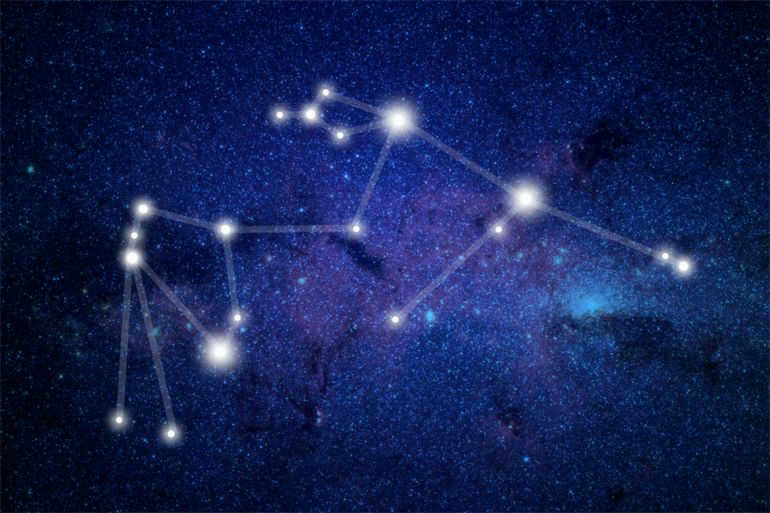
Ancient myths
The ancient Sumerians regarded Aquarius as a significant constellation. It represented the divine figure An, who bestowed life-giving water upon the people of Earth. The Greeks also believed that Aquarius was Zeus, pouring down rain on the planet. Some cultures believed that when the Sun passed through this constellation, it marked the beginning of the rainy season.
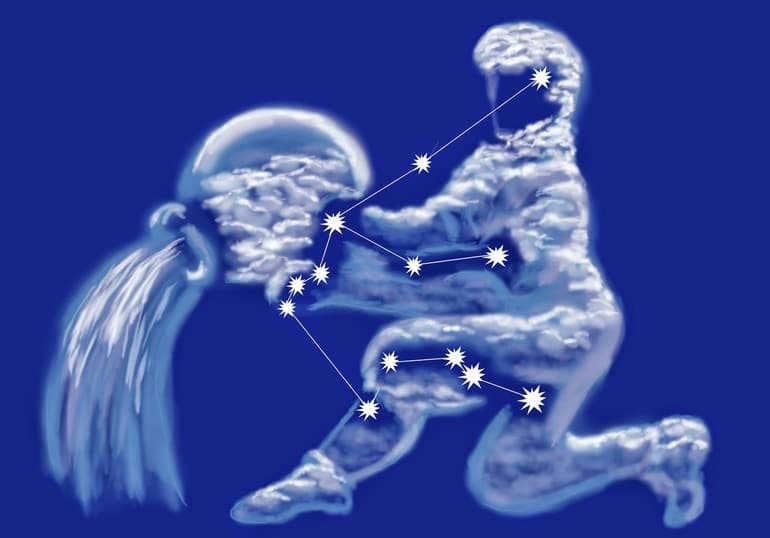
The constellation of Aquarius has a rich history that can be found in various mythologies. Early astronomers depicted it on ancient maps as a young man pouring water from a jug. According to ancient myth, this young man is Ganymede, the son of the king of Troy. Despite his handsome appearance, Ganymede was forced to herd sheep. However, his fate changed when Zeus spotted him from Olympus and commanded that he be brought to the mountain of the gods. There, Ganymede was granted immortality and bestowed the role of a heavenly cupbearer.
During the festivals, he would pour nectar for the gods. The liquid would flow like a river. This is how the image of the young man with the vessel came to be. While there are legends that say Aquarius resembles Deucalion, who was the hero of the Flood. The Greeks even believed that the pattern of the constellation is similar to the ancient king of Attica, Kekrop. Myths and mystical stories have been written about Aquarius.
In Latin, the name of the cluster sounds like “aquator” or “aquarius,” which means “cupbearer.” It is one of the oldest constellations recognized in the world. However, it does not have a distinct outline. Aquarius is listed in the “Almagest,” a catalog of the celestial sky compiled by Ptolemy. The astronomer added a brief description message to characterize the cluster.
Characterization of the constellation
The constellation is known as Aquarius in Latin and is abbreviated as Aԛr. It spans an area of 980 square degrees and rises between 20:32 and 23:50 hours. The brightest stars in the cluster are Sadalsuud and Sadalmelik, although there are 90 other celestial bodies in the cluster with a brightness exceeding 6 m.
Aquarius is surrounded by various constellations. The neighboring constellations include Pegasus, Pisces, Dolphin, Eagle, Small Horse, Southern Fish, Capricorn, Whale, and Sculptor.
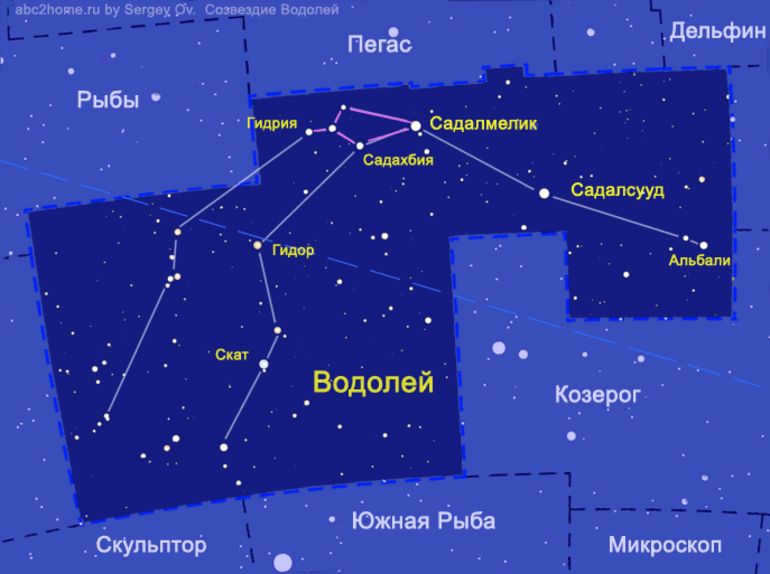
The cluster is visible within a range of +65 to -87 degrees.
You can catch a glimpse of the constellation in the sky towards the end of summer or on September 1-2. The Sun resides in Aquarius from February 16 to March 11, inclusively. The optimal vantage point for observing Aquarius is in regions located in the central or southern parts of Russia.
Position in the Celestial Sphere
Aquarius is positioned between the signs of Capricorn and Pisces in the zodiacal order. Moreover, this cluster can be found in the southern hemisphere of the sky. Due to its proximity to water signs like Cetus, Eridana, and Delphinus, the region where Aquarius is located is often referred to as the sea.
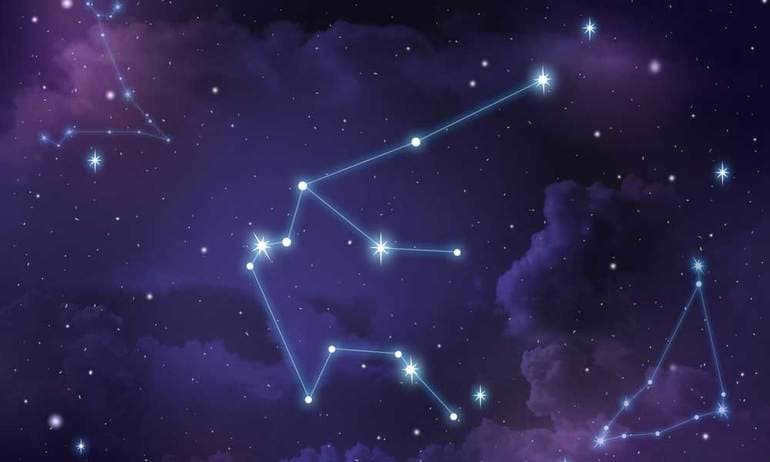
Aquarius is among the oldest and largest constellations. It covers a significant portion of the sky, making it the tenth largest. On a clear night with a bright moon, you can easily spot at least 90 stars in the Aquarius constellation.
However, only 7 of these stars are arranged in a line, forming an arc-like shape. In the center of this formation are the 5 brightest stars. This group of stars resembles a jug from which water is pouring out. It is quite challenging to notice a young man with a vessel in his hands, but this is how the cluster is depicted on star maps for those who study astrology.
This image is a result of the ancient history of the Aquarius constellation. The Greeks were observant of various natural phenomena, but they could only spot the cluster in the early autumn. This was because September marked the beginning of the rainy season, which occurred annually. As a result, the Greek people started associating the rainy season with the appearance of these stars in the sky.
The wise individuals believed that it was this youthful figure who would pour water onto the earth. Due to this belief, it is still said that the Aquarius constellation resembles a young man kneeling and holding a jug.
Brightest stars
In the constellation, there are three notable stars – alpha, delta, and beta. Among them, beta is the most brilliant. The lucky points, as named by the Arabs, are these stars:
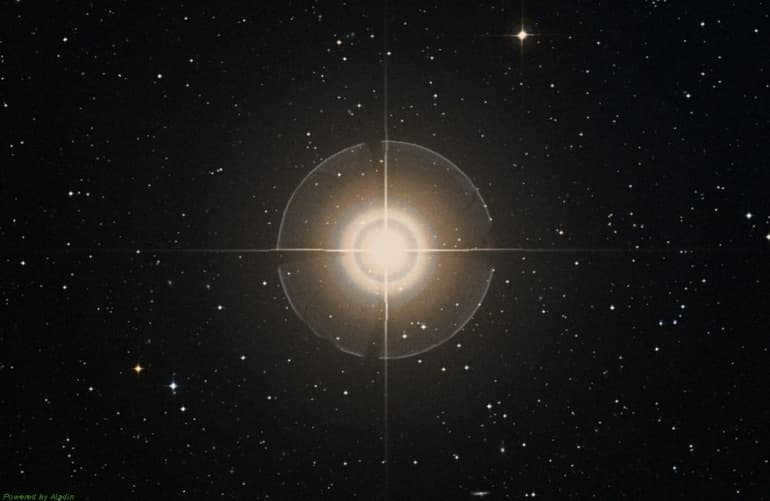
The first star in the constellation Aquarius is classified as a hot supergiant. This celestial body is extremely rare and has a temperature that is almost comparable to the heat of the Sun, reaching 5600 K. Located approximately 600 light-years away from Earth, Sadalsuud surpasses the Sun in terms of mass, luminosity, and diameter. One interesting fact about Sadalsuud is that it is a triple star system, with the beta star being accompanied by two other optical components.
However, up to this point, scientists have not been able to provide evidence that Sadalsuud is a system held together by gravitational forces. What is currently understood is that Sadalsuud is a visual triple celestial body. The star’s name, derived from Arabic, means “the happiest among the happiest.” This is due to the fact that Aquarius, the zodiac sign associated with Sadalsuud, marks the transition from winter to spring, a time that brings joy with the arrival of light rains.
The second brightest celestial object in Aquarius is Sadalmelik. In Arabic, its name translates to “the lucky star of the king.” In the constellation, Sadalmelik is positioned on the shoulder of the depicted young man drinking wine. This remarkable star is classified as a yellow supergiant. While its temperature is slightly lower than that of the Sun, its diameter and luminosity surpass the Sun’s parameters.
Located at a distance of 750 light years from our planet, the star in question stands out not so much for its size, which is actually not as impressive as that of other supergiants – some of which surpass the orbit of Jupiter. Instead, its name refers to its age, as this celestial body has undergone such significant development that it is now approaching its eventual demise.
The delta of Aquarius, known as Scutus or “thigh,” derives its name from the Arab astronomers who likened its position to that of a cupbearer’s leg. This unique white-blue star is situated a mere 160 light years away from Earth and lies on the main sequence within its spectral class. Astronomers speculate that Scutus is part of the traveling group of luminaries known as the Big Dipper. It also bears a resemblance to the beta star in the Leo constellation.
Meteor streams
Only a few of the stars in Aquarius, the most brilliant celestial objects, are visible to the naked eye. These consist of radiant stars originating from different meteor streams. They can be readily observed using a small telescope:
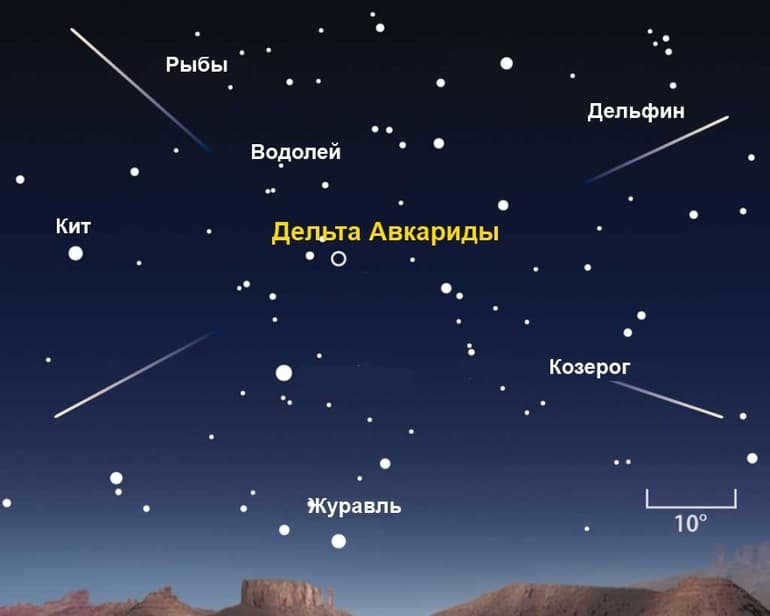

In close proximity to Aquarius constellation’s delta lie the Southern Aquarids, which can be observed during the summer months from June 15 to August 15. The peak of the delta meteor shower occurs on the night of July 29. During this night, approximately 14 meteors can be seen falling every hour. Another meteor shower, known as the Northern Deltas, is also situated in the same area. It is best observed in similar quantities as the Southern Aquarids, although it produces significantly fewer meteors per hour. According to scientists, witnessing both meteor showers simultaneously is a remarkable event as it allows for the study of the distinct characteristics of each meteor type.
This Aquarid is situated close to the beta star of Aquarius. It can be observed from May 1 to May 8 even with regular binoculars. On the fifth day of the month, approximately 36 meteors descend every hour. Astronomers occasionally link this meteor stream with Halley’s Comet, the brightest comet of the previous century. As it approaches the Sun, the Aquariid becomes more frequent, resulting in a higher number of meteors falling.
Adjacent to Aquarius is also the radiant of the Southern Yotes. It is easily visible from July 15 to August 25. On the fifth hour, around 10 meteors start to fall per hour. As the season progresses, the Northern Iota Aquarids become visible. This radiant is situated near theta Aquarius. Both meteor streams are also studied together to gain a better understanding of their structural characteristics.
Uncommon Items
The Aquarius star cluster is home to a variety of extraordinary cosmic objects. Astronomical atlases provide symbols, explanations, and descriptions for these unique phenomena. Here are some of the most fascinating:

The M72 cluster is known for being the faintest in the Aquarius constellation. It is a celestial body that is extremely dim, making it challenging to observe even with high-powered telescopes. Positioned just beyond the central point of our galaxy, the distance between Earth and this cluster is immense – spanning 53,000 light years. Ongoing research is being conducted to further understand this cluster, given its elusive nature and the difficulties it presents to astronomers.
One interesting fact about this object is that its coordinates were discovered twice in 1746. It was simultaneously observed by two scientists, J. Miraldi and Ch. Messier, who named it in their honor. Messier recorded M2 in the star catalog as a nebula without stars, but they were later observed by W. Herschel 11 years later and included in the astronomical catalog.
Close to M72 is another object called M73, also known as NGC 6994 and OCL 89. M73 consists of only four stars. Scientists have not yet determined if these stars are related in origin or gravitationally. Currently, it is known that they are simply located very close to each other. This asterism in the sky can only be seen with the help of a telescope. It is not particularly bright, but it is more noticeable than the M72 cluster.
Fascinating celestial clouds
In the starry expanse of the Aquarius constellation, there exist several extraordinary nebulae and galaxies. A handful of them reside in close proximity to our planet. The most captivating entities include:
- The Spiral Nebula;
- the NGC 7723 galaxy;
- The Ring Nebula;
- The NGC 7727 galaxy.

The Snail Nebula is the largest nebula in the Aquarius constellation. Unlike other similar celestial bodies, it is located relatively close to Earth, only 600 light-years away. Its brightness is so prominent that it can be easily observed with binoculars. The angular size of the cluster is approximately half that of the Moon. At the core of the Snail Nebula lies a star with a temperature of 60,000 K, which serves as the main source of illumination for the entire nebula.
The NGC 7723 spiral galaxy, which is relatively small in size, can be observed from Earth’s perspective. It is easily visible through a telescope, allowing one to observe its central region, distinctive shape, and arms. In 2015, a European amateur astronomer contributed amateur photographs of this galaxy to the star catalog’s gallery.
Adjacent to NGC 7723 is the NGC 7727 galaxy, a larger and brighter cluster. It is situated in close proximity to the M72 cluster. The NGC 7727 galaxy earned its name due to its peculiar shape, resembling that of a planet, with a ring encircling a spherical core. This cluster is notably luminous, boasting a multitude of morphological and kinematic subsystems. Observing the NGC 7727 galaxy requires a telescope equipped with a wide-angle eyepiece, allowing for an easy view of its axis and arms in the night sky.
In Aquarius, there exists a binary star system known as double zeta. This system consists of two stars that are located very close to each other, with only a separation of 2 angular seconds. Due to their proximity, it is challenging to determine the exact number of celestial bodies present. The distance between them is too small to be captured in a photograph. However, the stars differ in brightness by 0.2 m, indicating the presence of two distinct stars.
Observing the constellation Aquarius in the Slavic countries can be difficult. To increase visibility, it is advisable to venture outside of urban areas to open landscapes such as steppes or fields, devoid of tall trees. Choosing a clear night during a full moon is also beneficial. As the constellation appears low on the horizon, bringing a telescope or binoculars is highly recommended.
Astronomy Constellation Cassiopeia is a fascinating story, with a diagram depicting the constellation and its appearance in the night sky, along with its legendary status in mythology. Additionally, we explore the brightest star in the Cassiopeia constellation and some interesting facts surrounding it.
In the field of Astronomy, the Ecliptic holds a significant definition, as it refers to the path followed by the Sun and Earth in one plane. This concept also encompasses major constellations, the position of celestial bodies, and the coordination of points within the celestial sphere.
Aquarius is a prominent zodiacal constellation situated between Capricorn and Pisces. This ancient constellation has been documented since the 2nd century by the Greek astronomer Ptolemy. Its name, derived from Latin, translates to “cupbearer” or “water carrier.”
The primary celestial bodies of the Aquarius constellation
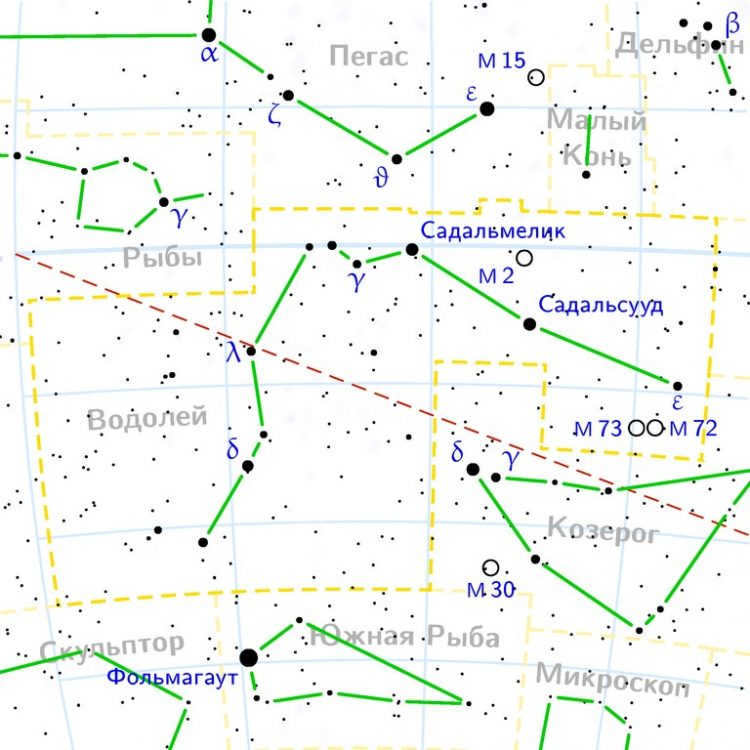
Beta Aquarius (Sadalsuud).
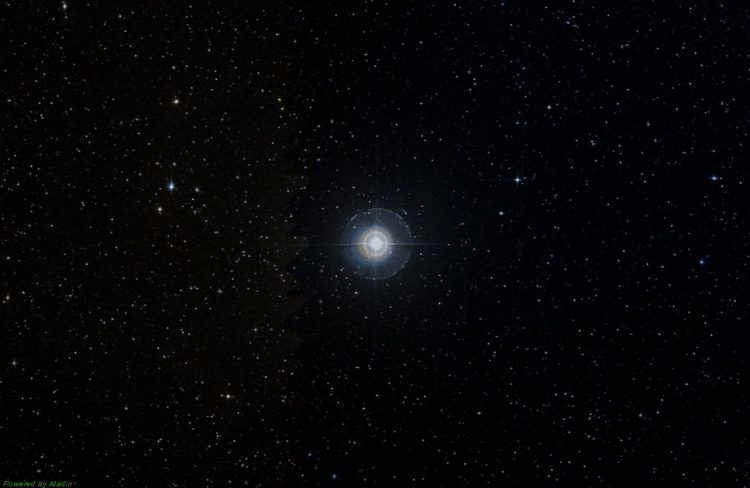
The initial star in the constellation is the brightest. It is a member of a rare class of stars known as yellow supergiants. It has an apparent magnitude of 2.87 and is located 540 light-years away.
Sadalsuud is another star in the constellation with a magnitude of 2.91m. It is unique because it belongs to the hot supergiants. Its spectral class is G0, and its surface temperature is similar to that of the Sun, around 5600 K.
Beta Aquarius is located 600 light-years from Earth and has a luminosity 2200 times greater than that of the Sun. Sadalsuud also surpasses the Sun in other aspects: it has a diameter about 50 times larger and a mass equal to six Suns.
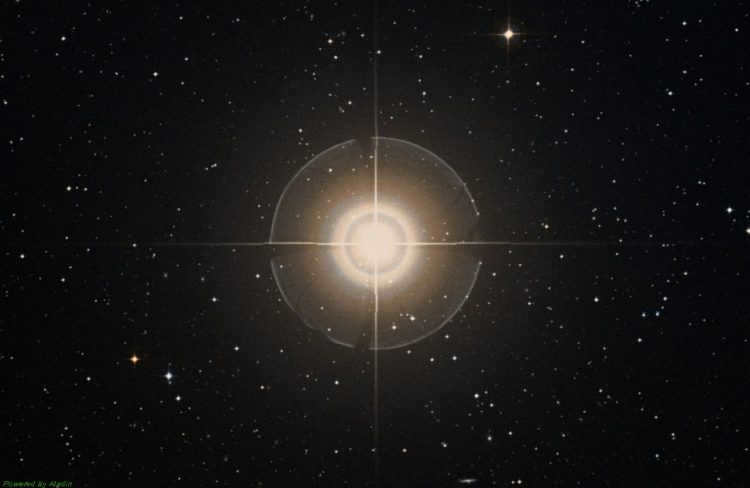
The second brightest star in Aquarius, following Sadalsuud, is Sadalmelik. However, Sadalmelik’s brightness is only slightly less than that of Aquarius’ beta. Sadalmelik is a G-type supergiant, appearing yellow in color, and located 800 light-years away. It shines 3,000 times brighter than the Sun and has an apparent visual magnitude of 2.950.
Sadalmelik is an extraordinary star for several reasons. Firstly, it is classified as a yellow supergiant. The surface temperature of Sadalmelik is just slightly lower than the Sun’s temperature of 6000 K.
It is worth mentioning that spotting a yellow supergiant in the night sky is a stroke of luck, as most of the prominent stars known to astronomers are either hotter (and therefore blue) or cooler (and therefore red).
As is customary, the star’s moniker has Arabic origins. The designation Alpha Aquarius signifies a “fortunate celestial body belonging to the ruler”. In the depiction of the constellation, this luminous entity adorns the right shoulder of Aquarius. Occasionally, the star is referred to as Rucbah, a title it shares with Delta Cassiopeia.
Delta Aquarius (Rucbah)
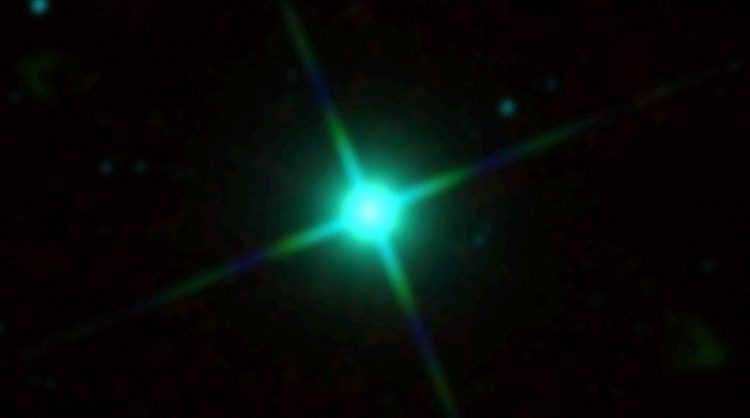
Ranked third in terms of brightness, following Sadalsuud and Sadalmelik, is the Aquarius Delta. It is more commonly known as Scat, which is derived from the Arabic word for “thigh”. This name is fitting as the star is situated on the leg of Aquarius. Scat has a visible stellar magnitude of 3.27m and belongs to the spectral class A3V. It is located 160 light-years away from Earth.
There is a possibility that Scutus is part of a moving group of stars in the constellation of Ursa Major.
Scut is a blue-white star. Delta Aquarius falls under the main sequence in terms of its spectral class.
Furthermore, linked with the meteor shower known as the Delta Aquaridae, the Southern hemisphere offers a spectacle that can be observed from mid-July to mid-August, reaching its peak on July 28-29. During this period, an average of 15-20 meteors can be seen per hour. On the other hand, the Northern hemisphere experiences this phenomenon from July 16 to September 10, with the highest activity occurring in mid-August. The average rate of meteor sightings in this region is approximately 10 per hour. It is worth noting that this meteor stream is frequently associated with Halley, the most brilliant comet of the 20th century.
Gamma of Aquarius (Sadahbia)
Sadahbia is a double star in Aquarius that can be observed spectroscopically. It has a period of 58.1 days and is located approximately 158 light years away. With a visible magnitude of 3.84, Sadahbia derives its name from the Arabic phrase “sa’d al-axbiyah”, which means “good luck in the house”. Within the constellation of Aquarius, Sadahbia can be found on the right forearm.
A binary star system with a visual brightness of 4.42 and a distance of 103 light-years. It is known by the name “sa’d al-tajir” in Arabic, which translates to “merchant’s luck”.
The primary star, Zeta-2 Aquarius, is a yellow-white F-type dwarf with a magnitude of 4.42. Its companion, Zeta-1 Aquarius, is a yellow-white F-type subgiant with a magnitude of 4.59. This duo is easily identifiable due to their similar brightness.
Aquarius’s R
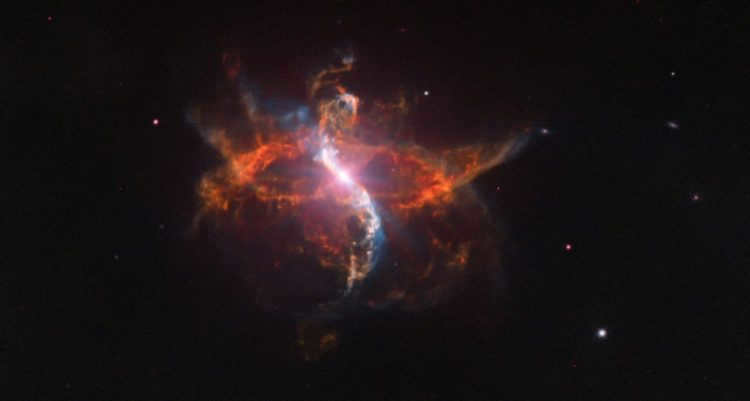
One of the most fascinating and well-known variable stars in the constellation of Aquarius is R Aquarius, which was the first variable star discovered in this constellation. It falls under the classification of a symbiotic variable and is located approximately 650 light-years away, making it the closest star of its kind to Earth.
This star system consists of a white dwarf and a red giant, specifically a Mira-type variable star. The white dwarf gravitationally pulls material from the red giant and occasionally expels excess material, resulting in the formation of a nebula surrounding the system known as Cederblad 211.
91 Aquarius
Rephrase the text, making it unique, using the English language and preserving the HTML markup:
91 Aquarius
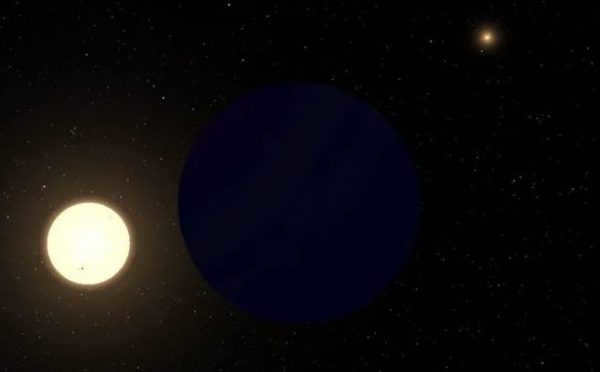
In the perspective of the artist, we see the 91 Aquarius system.
Located 148 light-years away, this triple system boasts the brightest component. The main star, an orange giant, has an apparent magnitude of 4.22. Accompanying it is a double star with a magnitude of 10. Orbiting around the primary star is the planet known as 91 Aquarius b (HD 219449 b). This planet is situated at a distance of 48.5 Gm, which is less than the distance from the Sun to Mercury (57.9 Gm).
In 2003, a team of American astronomers made an announcement regarding the discovery of an exoplanet at the star 91 Aquarius A. This gas giant planet is exceptionally massive, with a mass nearly three times greater than that of Jupiter.
Gliese 849: Uniquely Phrased
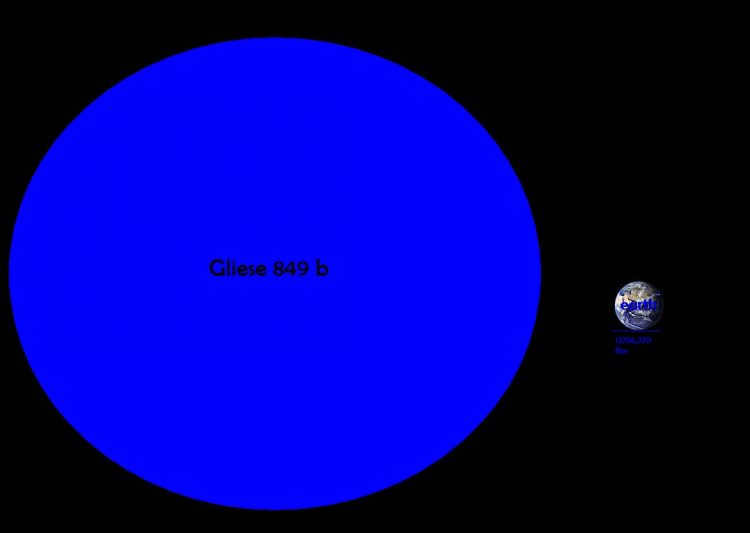
A red dwarf located 29 light-years away houses the planet Gliese 849b, which orbits at a distance of 2.35 astronomical units. This discovery, made in August 2006, is significant because it marks the first time a Jupiter-like planet has been found in orbit around a red dwarf star.
A faint red dwarf star, located 15 light years away, remains inconspicuous despite its close proximity due to its low apparent magnitude of 10.1, requiring the use of instrumentation to be detected.
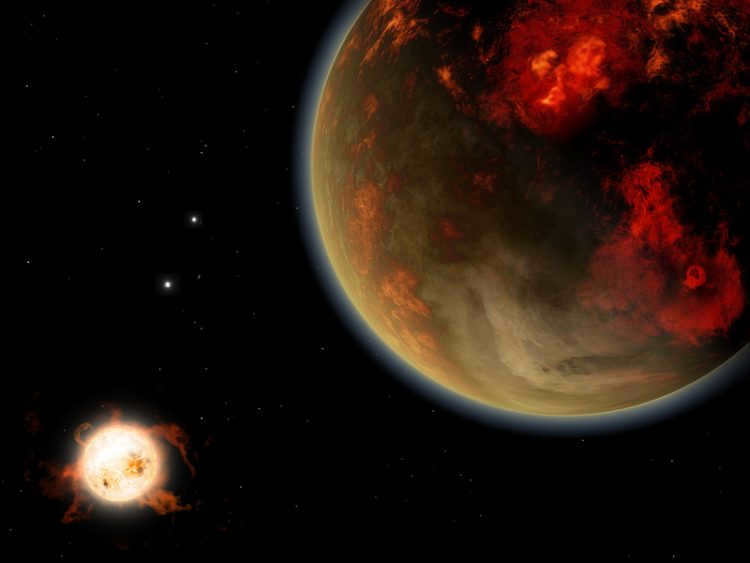
An artist’s depiction of the Gliese 876 system
In 2010, scientists confirmed the existence of four exoplanets orbiting the Gliese 876 star. The innermost planet is believed to be either a small Neptune-like planet or a large Earth-like planet. The middle two planets are similar in size to Jupiter, while the outermost planet has similarities to Uranus. Interestingly, the orbits of the outer three planets are locked in what is known as Laplace resonance, meaning their orbital periods are in a simple integer ratio of 1:2:4.
88 Aquarius.
An orange giant of the K-type, located 243 light-years away. Its visible magnitude is 3.68.
Lambda Aquarius
A red giant of the M-type, situated at a distance of 392 light-years. This star is classified as an irregular variable and has an average apparent magnitude of 3.73. In ancient Greek, it is also known as Hydor and Ekkhysis, which mean “water” and “outpouring”.
Epsilon of Aquarius
A subgiant star in the Aquarius constellation, Epsilon of Aquarius is a variable star that has a suspicious behavior. It has an apparent magnitude of 3.8 and is located at a distance of 215 light-years from Earth. The star has been historically known as “Albali” in Arabic, which means “swallow”. It has also been given the nickname “Nir Saad Bula”, which translates to “brightest swallow luck”.
Noteworthy celestial entities worth observing
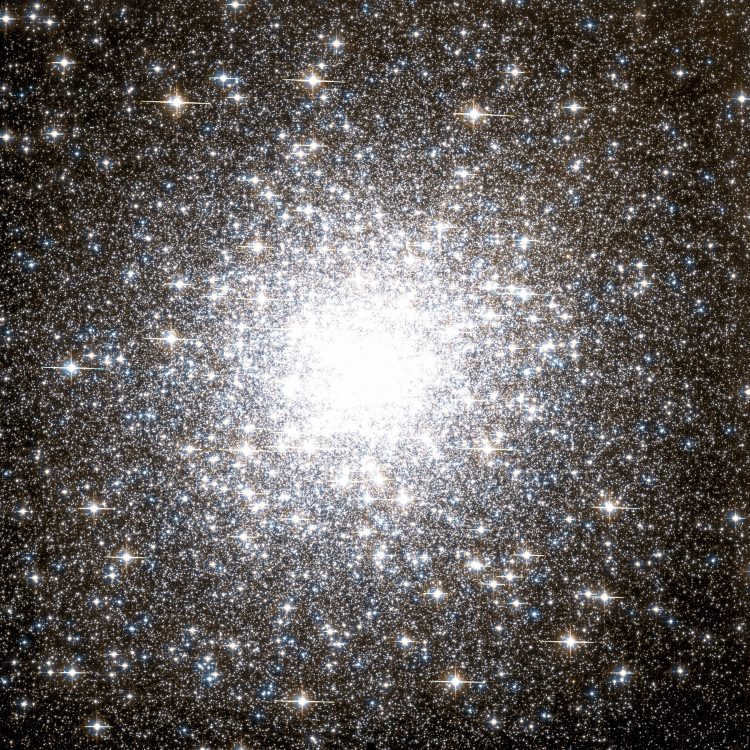
Globular star cluster, which is visible to the naked eye when the weather is favorable and there are no city lights. It contains approximately 150,000 stars. M 2 is one of the most compact and abundant globular clusters. It has earned a place among the largest globular clusters due to its diameter of 175 light-years.
M 2 is located 37,500 light-years away and has an apparent magnitude of 6.3. The brightest stars in the cluster are red and yellow giants with a magnitude of 13.1. The constellation was discovered by Italian astronomer Jean-Dominique Maraldi in 1746 while he was observing a comet with Jacques Cassini. Charles Messier later discovered the cluster in 1760, but initially mistook it for a nebula. German astronomer William Herschel was the first to identify the stars as part of a cluster in 1783.
2. The celestial Snail Nebula (NGC 7293, C 63)
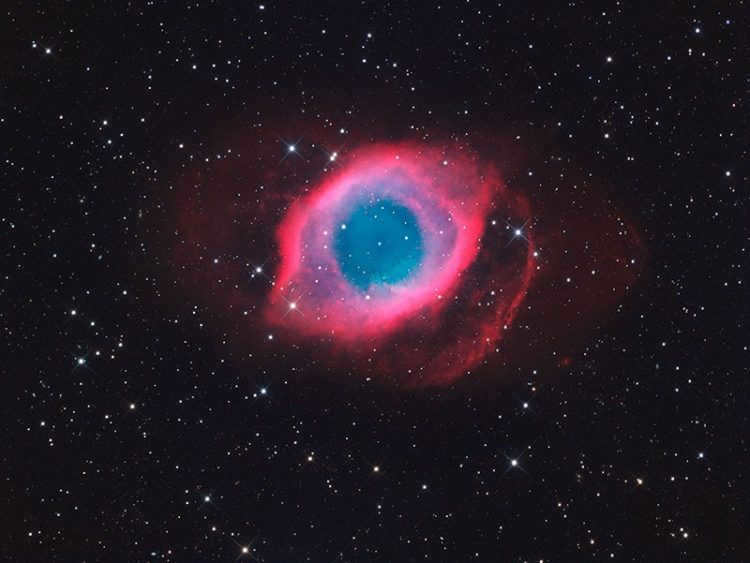
You may have come across this unforgettable image of the Snail Nebula in the Aquarius constellation (NGC 7293). Without a doubt, the Hubble telescope captured an incredible photograph. Subsequently, the astronomers conducted post-processing on the image.
Situated 500-600 light years away from our Sun, this nebula is the closest planetary nebula that has been discovered. When viewed through small amateur or semi-professional telescopes, it appears as a circular nebular spot.
Due to its appearance, the nebula has been given the nickname “The Eye of God“. It was the first planetary nebula with knots to be discovered. The nebula has a brightness of 7.5m and an angular size of 17.57′. To locate it in the night sky, you will need to start from the star Scut, which has a magnitude of 3.25m, and move southeast.
There are three objects in close proximity to each other.
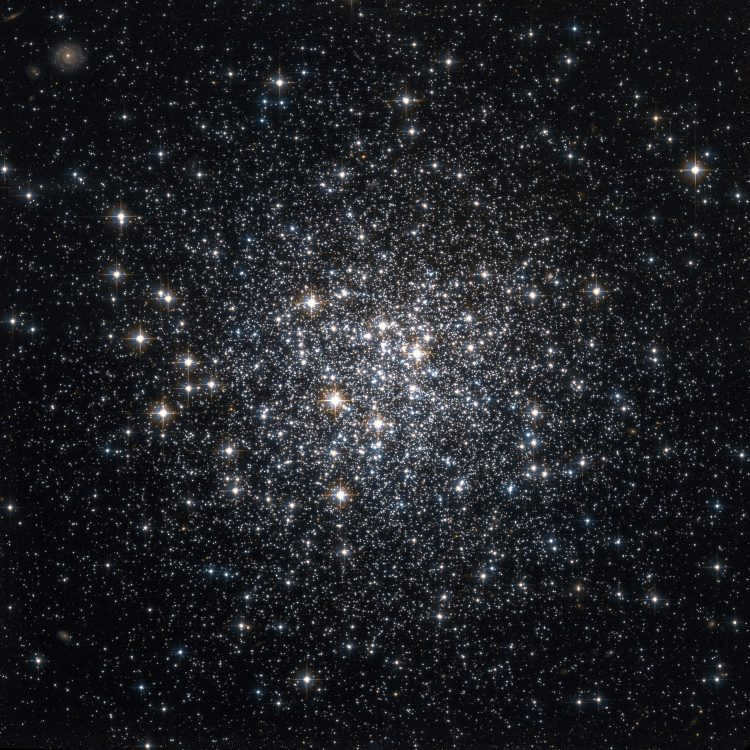
M 72 is an incredibly bright and vibrant globular star cluster. Situated approximately 53,000 light-years away from the Sun, it is one of the most distant clusters featured in the prestigious Messier catalog. With a luminosity rating of 9.3 m, M72 is truly a captivating sight. In fact, there are a remarkable 42 variable stars that have been identified within this extraordinary cluster.
Back in 1780, the talented astronomer Pierre Mechant, hailing from France, made the groundbreaking discovery of M72. Alongside the renowned Charles Messier, they initially perceived the cluster as a faint nebula. It is worth noting that distinguishing this cluster can be quite challenging, as it bears a striking resemblance to a hazy spot when viewed through a 10-inch telescope. However, if you’re fortunate enough to have access to a 20-inch telescope, you will be able to witness the magnificent stars that comprise this cluster in all their glory.
4. Asterism M 73 (NGC 6994)
4. Star grouping M 73 (NGC 6994)
NGC 6994, also known as M 73, is a small asterism located in the constellation Aquarius. It was discovered by Charles Messier in 1780 and is composed of four stars that appear to form a shape similar to the letter “Y”. The asterism is relatively faint and can be difficult to observe with small telescopes, but is easily visible with larger instruments. NGC 6994 is not a true star cluster, as the stars are not gravitationally bound and are simply aligned along the same line of sight. Nonetheless, it is still an interesting object to observe and study in the night sky.
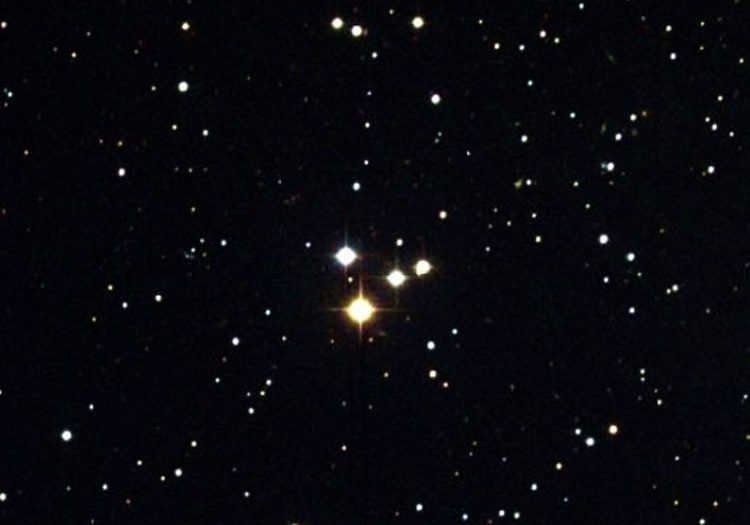
M 73 is an asterism composed of four stars. These stars have magnitudes of 10th and 11th. When observed through a telescope, they appear as a small nebula. According to astronomers’ hypotheses, these stars are physically connected to each other through gravitational forces.
Before 2002, M73 was believed to be a sparsely populated open cluster. However, a study revealed that the six brightest stars not only had varying distances from us, but also moved in different directions.
5. The Planetary Nebula Saturn (NGC 7009, C 55)
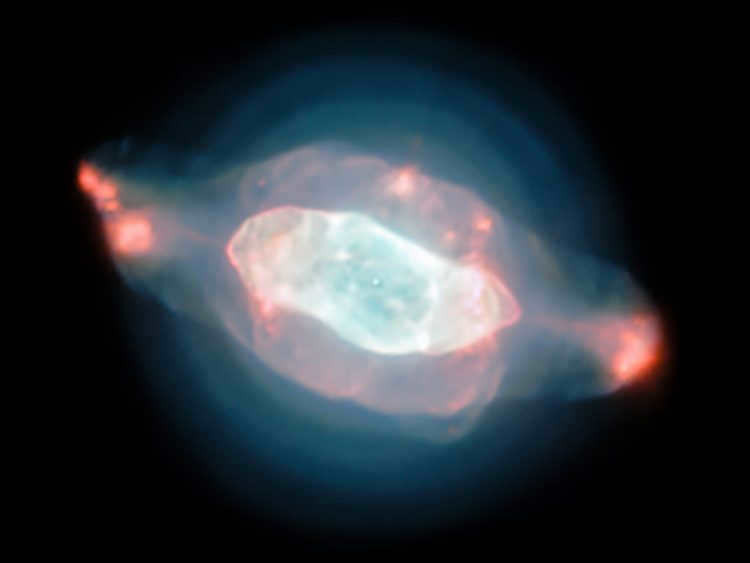
There is another celestial body worth observing in the Aquarius constellation, and it goes by the name of the extraordinary “Saturn” planetary nebula. It derived its name from the planet Saturn in our solar system, which bears a striking resemblance when observed through a telescope. The central star in the nebula has a stellar magnitude of 11.5 m. The nebula itself is relatively small, with a surface brightness of -8.0 m.

A beautiful spiral galaxy, known as NGC 7723, is visible from Earth with an apparent size of 3.5′ × 2.2′. When observed through a telescope with a diameter of 150 millimeters, you can clearly see its arms, shape, and bright central region. The galaxy has a brightness of 11.2 m.
To locate the star ψ1 Aqr (which is surrounded by several other bright stars), simply rotate the telescope counterclockwise.
7. NGC 7727: A Fascinating Spiral Galaxy
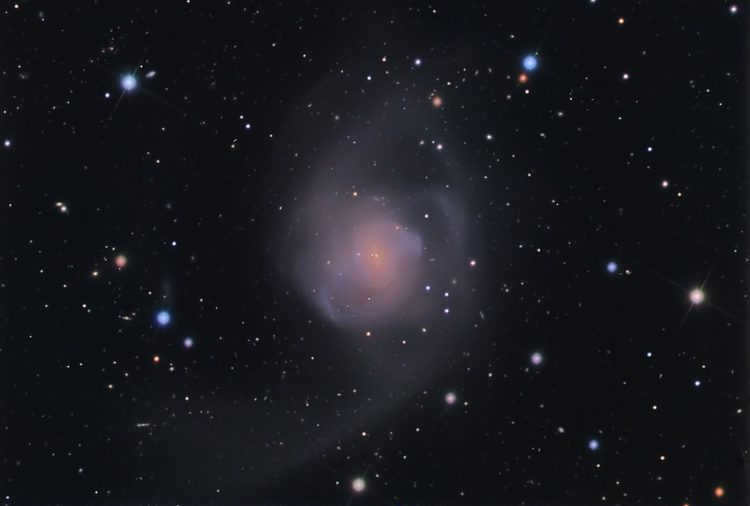
Adjacent to the preceding galaxy NGC 7723 lies the more sizable and radiant galaxy NGC 7727. Situated 76 million light-years away from Earth, this peculiar spiral galaxy possesses an apparent magnitude of 11.5. Its expanse measures 4.7′ x 3.5′.
Its distinct appearance can be attributed to the amalgamation of two spiral galaxies approximately one billion years ago. Consequently, this event resulted in its inclusion within Halton Arp’s catalog of extraordinary galaxies, Arp 222. However, it is anticipated to transform into an elliptical galaxy in the forthcoming future.
The constellation Aquarius is commonly regarded as a summer or autumn constellation. The optimal period for observing it spans from August to November. During this time, Aquarius is at its highest point above the horizon in the evenings, located in the southern region of the sky.
However, this does not imply that the constellation cannot be observed in other months. For instance, from May to July, Aquarius can be seen in the morning and nighttime sky in the southeast and south directions. Additionally, in December and January, it can be observed in the early evenings in the southwest.
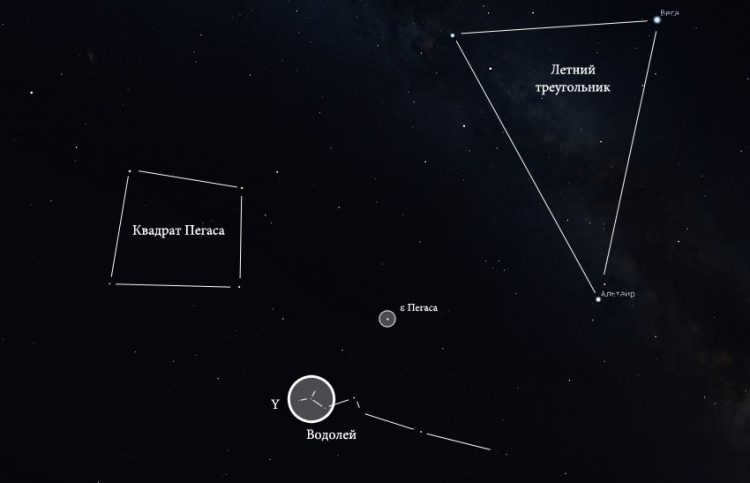
To locate Aquarius in the night sky, you can follow these steps:
- During the evening (between August and November), wait until it is dark and then face south. Look up and you will notice three bright stars forming a triangle known as the Great Summer Triangle. These stars are named Vega, Deneb, and Altair. The triangle is positioned in a way that points downwards towards the horizon. At the top of the triangle is the star Altair. Altair is the key star to observe.
- Now, shift your focus approximately 30 degrees to the east (to the left) of the triangle. You will come across a square shape composed of four stars, which have a similar brightness to the stars found in the Big Dipper’s handle. This square is relatively large in size, but smaller compared to the Great Summer Triangle.
- Observe the succession of stars that extends towards the west from the lower right corner of the square to reach the star Altair. These stars belong to the constellation Pegasus. The most brilliant one in this sequence is epsilon Pegasus, positioned approximately midway between the square and Altair.
- Consequently, the constellation Aquarius occupies the portion of the celestial sphere located directly below this star chain.
The Origin of Aquarius Constellation
The constellation Aquarius has been historically associated with the element of water, which is considered the source of all life on our planet. In the ancient civilization of Sumer, Aquarius held great significance as it represented the sky god Ana, who bestowed life-giving water upon the earth. Ana was highly revered and held an air of mystery within the Sumerian pantheon of deities. This god held particular importance for the people inhabiting desert regions, where water was synonymous with survival.
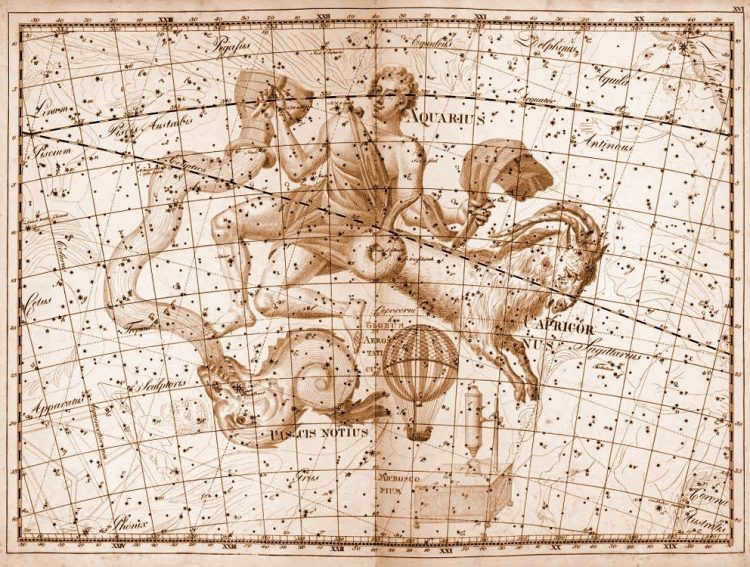
Aquarius Constellation by Jan Hevelius
Ancient Greek mythology associates Aquarius with various mythical figures. One such figure is Ganymede, a young man who was the son of the Trojan king Tros and the nymph Calliroi. Zeus, captivated by Ganymede’s beauty, transformed into an eagle and abducted him, taking him to Olympus where Ganymede became the cupbearer to the gods.
Another mythical character associated with Aquarius is Deucalion, the hero of the Great Flood. Deucalion was the king of the Thessalian city of Phthia, the son of Prometheus and Clymene, and the husband of Pyrrha. According to legend, Zeus decided to punish humanity for their numerous transgressions during the Copper Age by sending a torrential downpour to flood the earth and wipe out all of mankind.
Prometheus, upon learning of this, advised Deucalion to construct a vessel in order to flee with his spouse. And so it came to pass. Deucalion and Pyrrha were the sole survivors of the deluge. In the Bible, a comparable tale served as the foundation for the myth of Noah and his ark, upon which he, his wife, and their children were rescued. The flood was unleashed upon the earth as punishment for the transgressions of mankind, much like Deucalion’s flood.
In commemoration of the deluge, the constellation Aquarius materialized in the heavens. On ancient maps, it is represented as a figure pouring water.
Astrology: The Study of Celestial Bodies and Their Influence on Human Life

Aquarius is known as the eleventh astrological sign in the zodiac. It is typically associated with the period between January 20 and February 19, although the exact dates may vary depending on the year.
Aquarius is considered to be the second sign of winter. This time of year is often characterized by its extreme cold and harsh weather conditions, but beneath the surface, nature is quietly preparing for the arrival of spring. Just as the seeds are taking root, Aquarius possesses a strong desire for independence and self-reliance, allowing them to patiently wait for the arrival of a new season.
Aquarius is an air sign, and individuals born under this sign feel most comfortable in environments that are constantly changing and evolving. They have a natural inclination to be at the forefront of events, often anticipating what is to come before it even happens.





